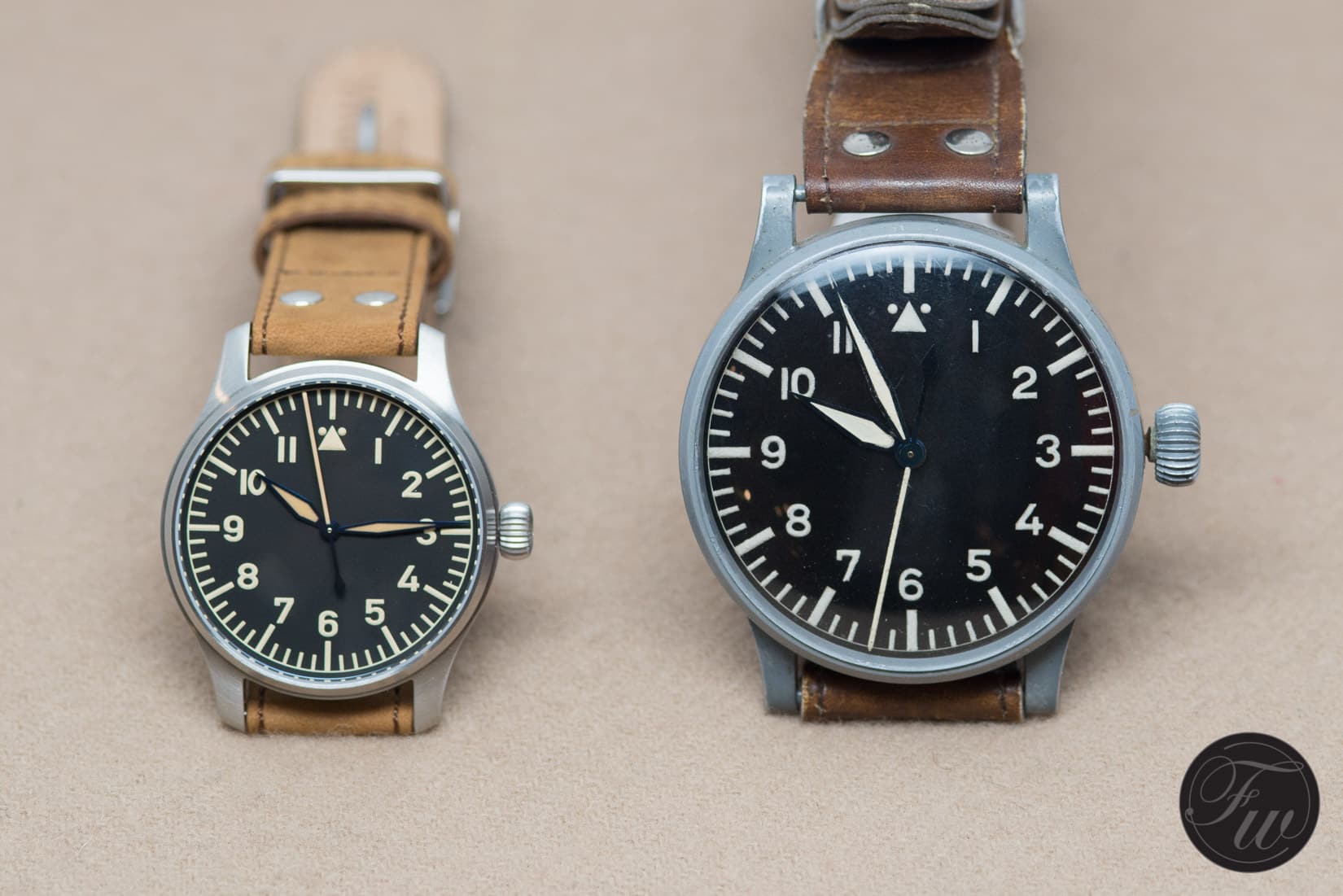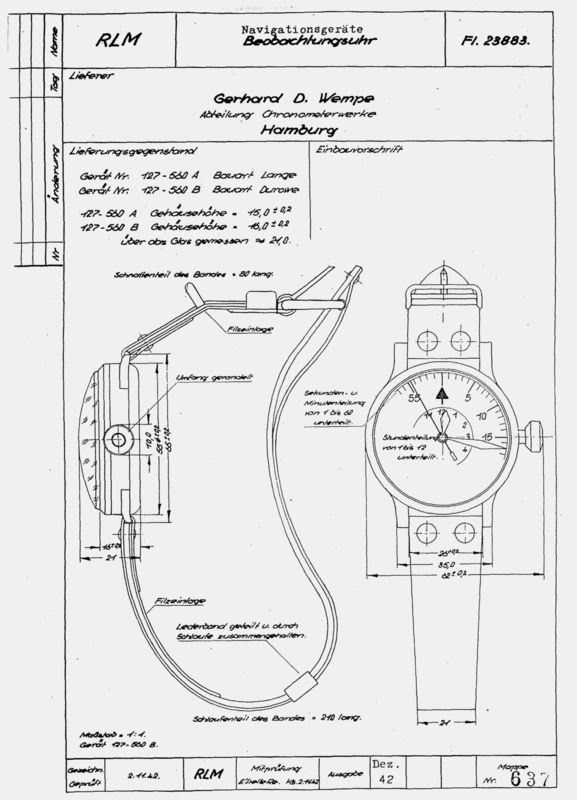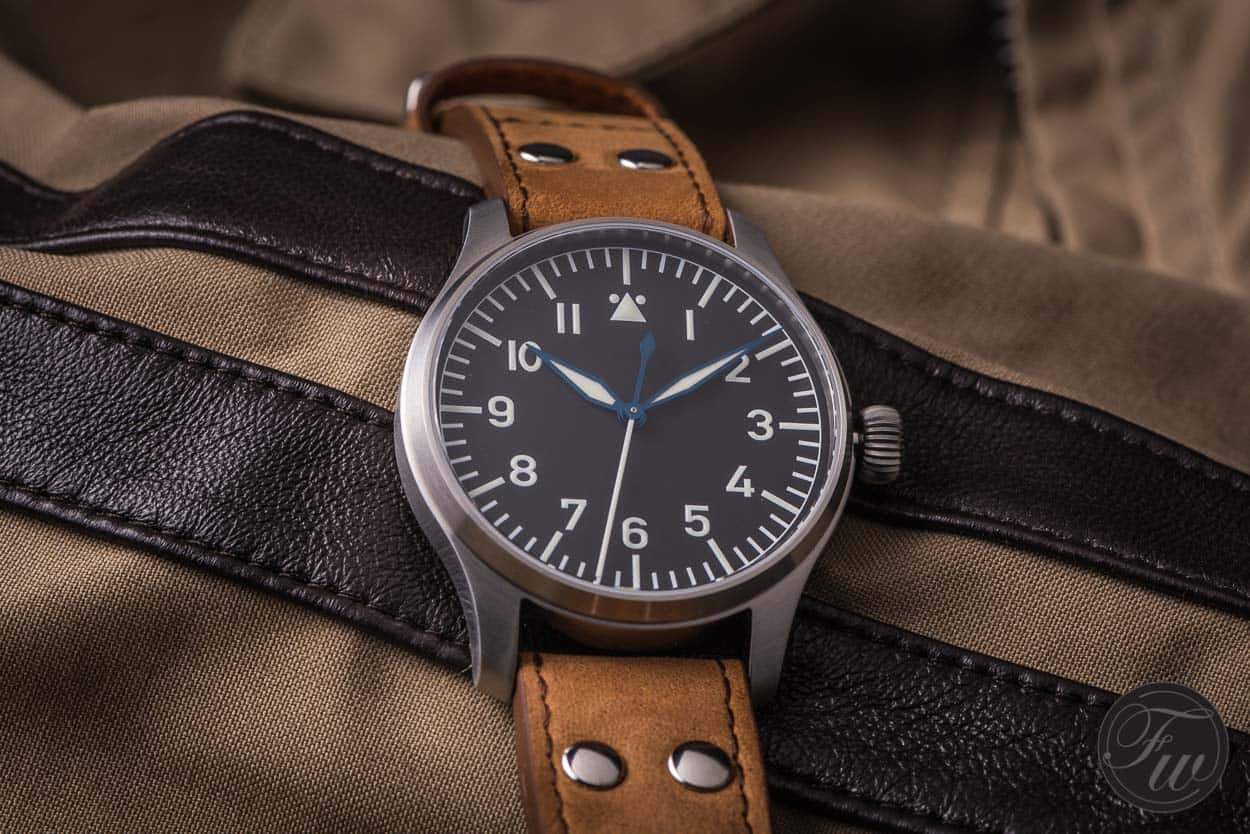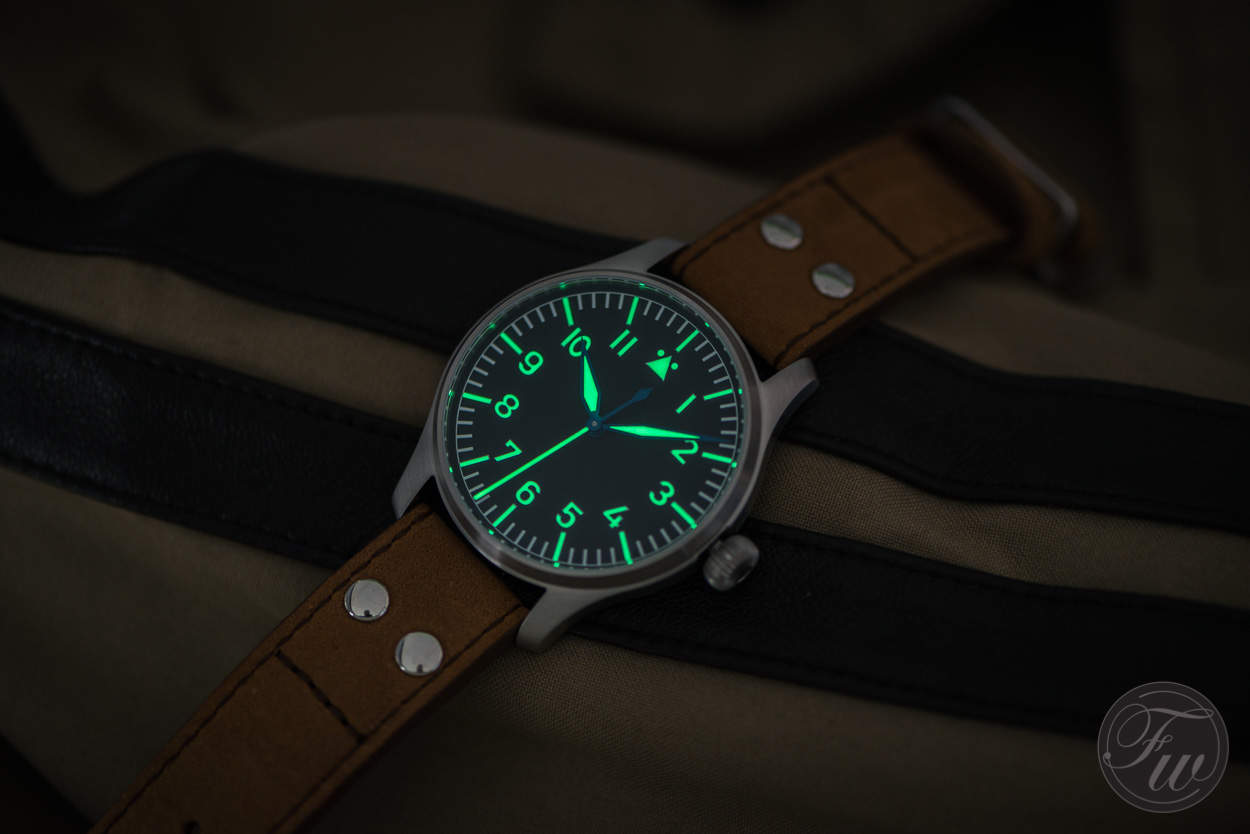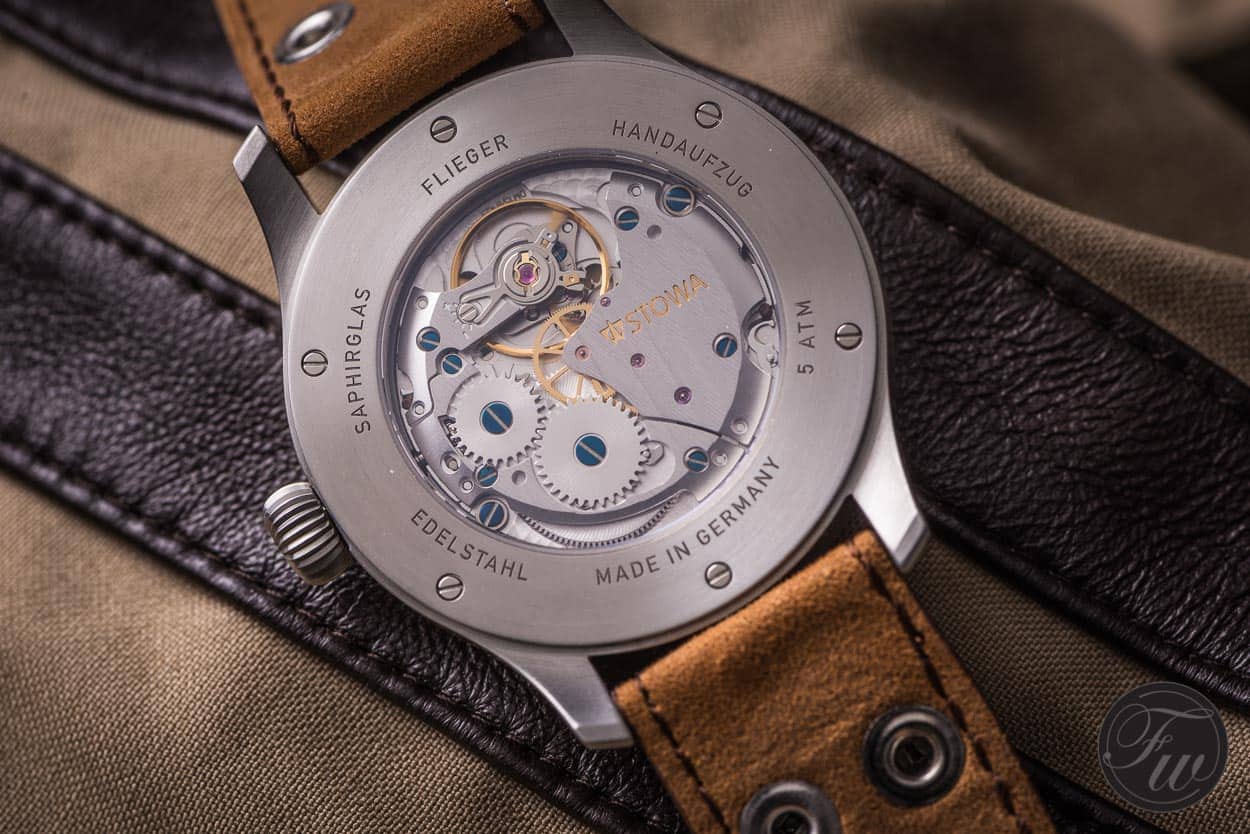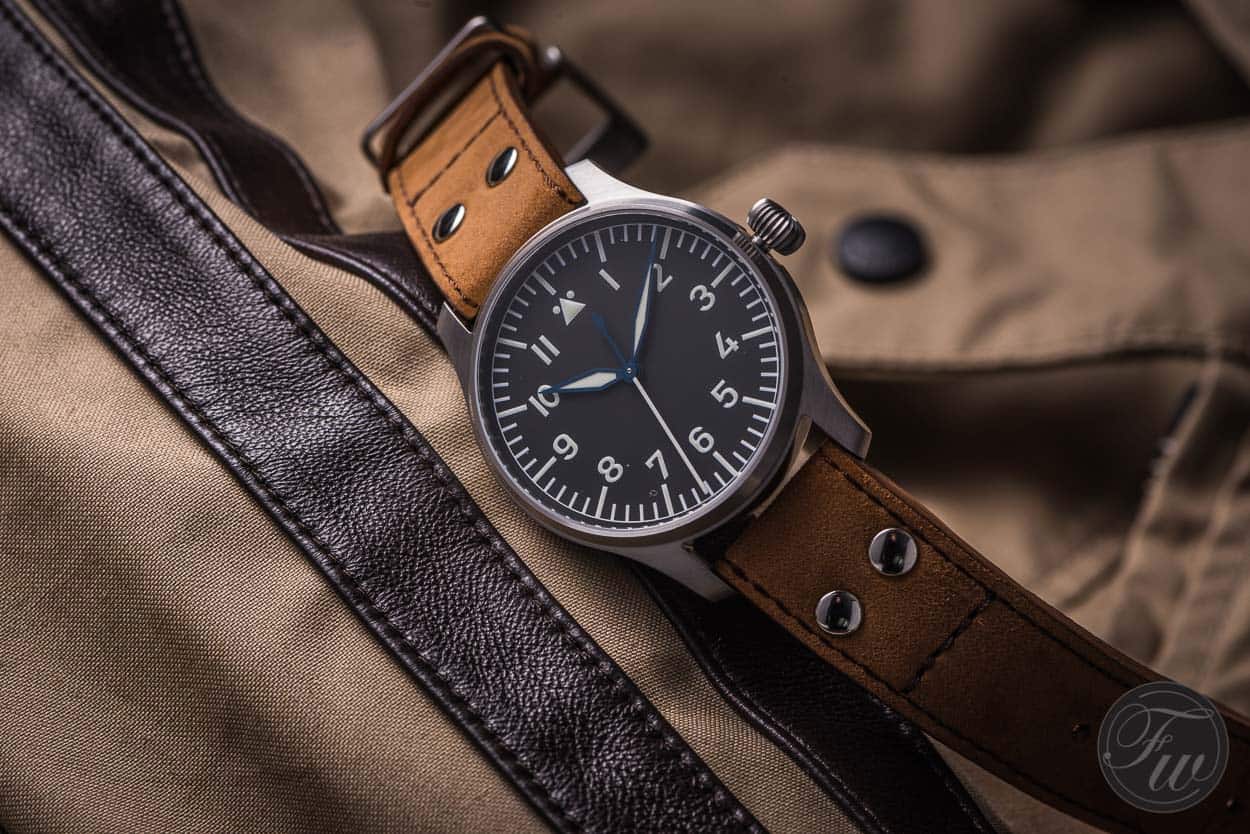Hands-On With The Stowa Flieger Klassik 40
There was a time that a watch had no logo on the dial. This was mainly the case with pocket watches, perhaps a few of the first wristwatches also lacked a logo on the dial. The pilot’s watches of the 1940s, the so-called ‘Beobachtungsuhr’ or B-Uhr is also known to have no logo on the dial. Only a few manufactures made these watches according to German specifications: A. Lange & Söhne, Laco, Wempe, IWC and Stowa. In 1940, Stowa produced its first B-Uhr, Type A. In 1997, they re-introduced the Flieger watch with no logo on the dial. Today, we are looking at the current Stowa Flieger with manual movement. For under 1000 Euro.
B-Uhr Type A and Type B
Sometimes, there is some confusion between the B-Uhr Type A and Type B (Baumuster A and Baumuster B). The main difference is the year of production (and design) and the requirements for the dial. Below, an image of the Stowa B-Uhr Type A together with one of their newer Flieger (B-Uhr) watches (the Stowa 90th anniversary limited edition). These watches were specifically designed and produced for the German Luftwaffe in WWII.
As written in the introduction, Stowa was one of the five companies that manufactured these B-Uhren (Uhren is plural of Uhr) or ‘observation’ watches for the German Luftwaffe. In 1940, Stowa created the first B-Uhr Type A, as shown above. These were made from 1940 till 1941 and featured a dial with numerals from 1 to 11 and a triangle accompanied by two dots at 12 o’clock. No logo. In 1941, the Germans came up with the B-Uhr Type B (or Baumuster B) design. The B-Uhr Type B had an extra scale on the dial, indicating hours from 1 to 12. On the outer track, the B-Uhr Type B showed the minute markers from 5 till 55. At 12 o’clock, there’s the triangle again, but this time without the dots. Below, an original drawing for the B-Uhr Type B, where the supplier’s name is mentioned (Wempe in this case).
All B-Uhren had the following specifications, as required by the „Reichsluftfahrtministerium“ (RLM) – Imperial Air Ministry. Watch enthusiast and collector Mike Stuffler did an interesting write-up about this on the famous WatchUseek forums. He documented the specifications for the B-Uhr:
- case diameter of 55 mm
- caseback marked with FL 23883 (FL = flight, 23 = navigation)
- large crown for use with gloves
- hacking movement
- Breguet balance-spring
- regulated and tested as chronometers
- leather strap to be worn over the sleeve of a flight jacket
Stowa also produced the B-Uhr Type B, around 1942. According to Stowa, they only made around 42 of these pieces. The B-Uhr by Stowa used an Unitas caliber 2812 movement.
Stowa Flieger Klassik 40
So far for the original 55mm pilot’s watches and some of its history. What I have in front of me is the Stowa Flieger Klassik 40 with a hand-wound movement. My colleague Bert and I ran into a pop-up store of Stowa some months ago, somewhere in the south of Germany. The most simple (in our eyes) Stowa popped out most for us, the Klassik 40. A no-nonsense pilot’s watch with no logo on the dial, central seconds hand and a hand-wound movement. This watch, although 15mm smaller in diameter, has been inspired by the B-Uhr Type A from 1940. In 1997, Stowa introduced this model with an automatic movement and it has been their best-seller ever since.
However, I prefer the manual wind movement in this watch. Stowa uses the ETA caliber 2804-2 movement for this Flieger Klassik 40 hand-wound model. This hand-wound movement adds 20 Euro to the price compared to the automatic movement (ETA caliber 2824-2).
Night Vision
The size of 40mm is very comfortable and will suit most wrist sizes. For those who love to wear something larger, Stowa also offers their Flieger in 43mm. The Stowa Flieger Klassik 40 comes with a very nice and soft leather strap, with a bit of patina. The strap design is also influenced by the official specifications from 1940, except for the length of course.
On the dial, Stowa used Super-LumiNova C3 to ensure a good read-out in low-light conditions. The large minute and hour hands are filled with lume and the central seconds hands is all lumed starting from the center pinion. The hour markers and Arabic numerals as well as the triangle with the two dots are also fully lumed. As you can see below, you won’t have much trouble reading the time in the dark.
Hand-wound Movement
As written above, the original B-Uhr watches by Stowa used the Unitas caliber 2812 movement. These movements were regulated and tested as chronometers at the time. The caseback was closed of course, and had a couple of engravings, like the producer, movement, FL number and serial number. The automatic version of the Stowa Flieger Klassik 40 has those engravings, but the model we chose has a transparent caseback.
As you can see on the photo above, the movement is relative small (25.6mm), which leaves some room for engraving on the stainless steel part of the caseback. It reads Edelstahl (stainless steel), Handaufzug (manual wind) and the rest is evident I think. The movement looks very nice, with striped finish, large balance wheel and blued screws. The bridge has been engraved ‘Stowa’ and filled with a gold color. It is a workhorse movement and does the job right. The movement is not a chronometer and it is also unknown whether Stowa at least regulates them within chronometer specifications, like the original B-Uhr types. However, I didn’t notice much deviation during the time of wearing this watch. I have to admit I rotate my watches very frequent, so I am rarely bothered by precision as long as it is within the acceptable range (meaning not minutes per day).
The large onion shaped crown makes it easy to grasp and wind the watch. The Stowa Flieger Klassik 40 with this hand-wound movement has a power reserve of 42 hours.
History on the Wrist
Wearing this watch I was constantly reminded of the history of this pilot’s watch, or Flieger. Not that it reminded me of the Luftwaffe or other things, but the design of the watch is so iconic and well known that you are constantly aware you are wearing a ‘real’ pilot’s watch. I’ve worn and tried an IWC Big Flieger on some occasions for example, and that was just a nice watch on the wrist with a beautiful movement. It didn’t really connect me to an original B-Uhr. This Stowa is definitely something much closer to the original, despite the smaller size. The dial without a logo is a big plus to me. Not that I don’t like Stowa (on the contrary), but it gives the watch this raw and genuine edge. I love that.
Verdict
I like this watch. Plain and simple. The price of 950 Euro (930 Euro for the model with automatic movement) does help of course. These Stowa Flieger Klassik watches are the best sellers from the company, and that’s clearly understandable. The Stowa Flieger Klassik 40 offers great value for money and there is little to criticize. They followed the original design and even offer it in a couple of flavors to those who prefer an automatic movement over a hand-wound or want something with a date or with Stowa logo. That’s all fine. If there is one thing I had to change, it would probably be the caseback. I would have preferred an all stainless steel caseback with engraving. But that’s me and I know that lots of people prefer to look at the mechanics inside. I can also understand this choice from a entry-level purpose. I don’t want to come across snobbish here, but I assume that a sub 1000 Euro watch is often bought by people who just start out with mechanical watches. This is the group of people who really prefer to look at the mechanical movement they spend so much money on. For the 90th anniversary of Stowa (founded in 1927), there were also some anniversary models of the Flieger Klassik 40 watch. Were, as they’ve been all sold out or reserved a while ago.
The Stowa Flieger 40 Klassik as reviewed in this article has a list price of 950 Euro and can be ordered on-line, directly from Stowa. Expected delivery time is approximately 2 weeks.
More information, visit Stowa on-line.

